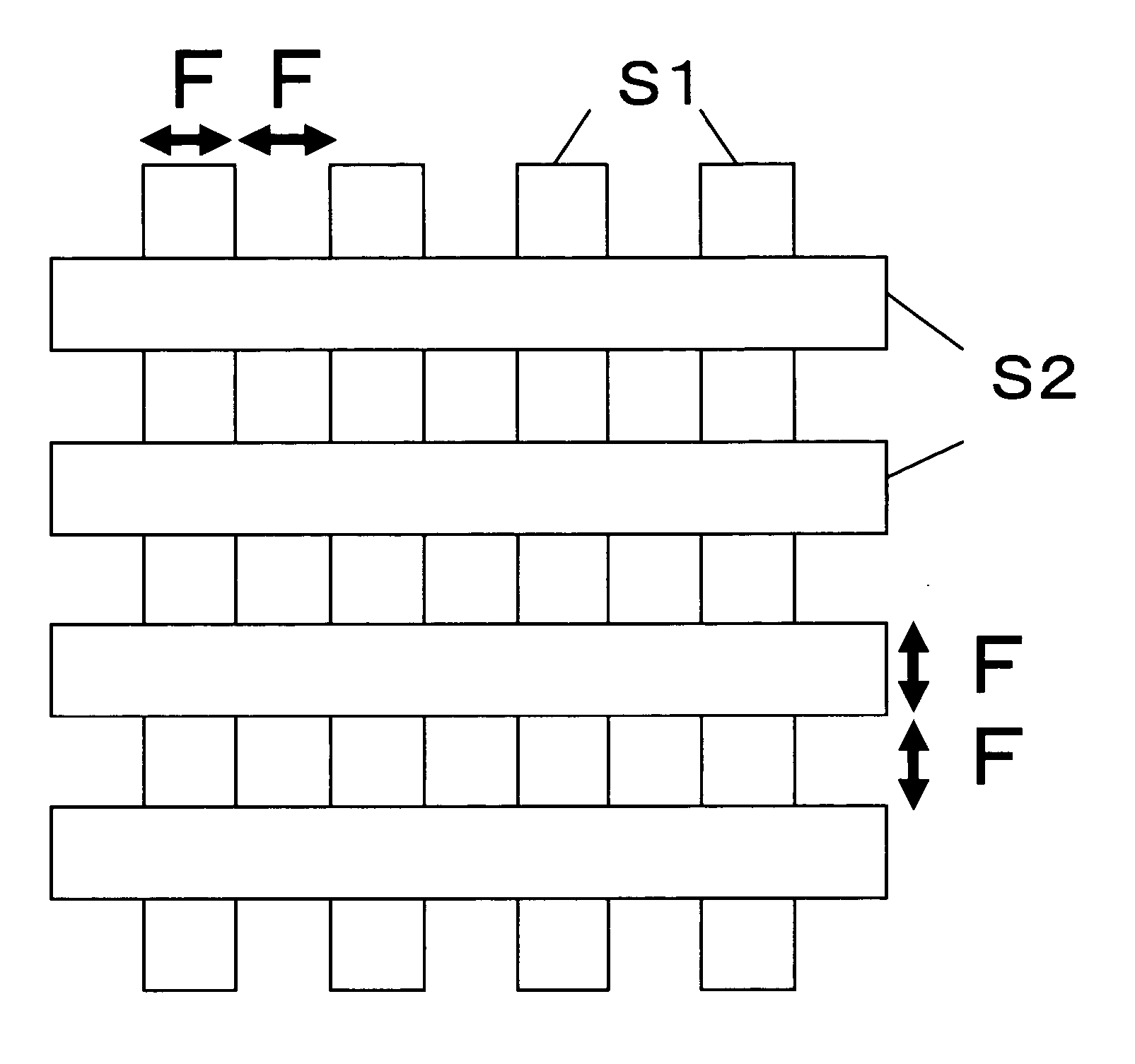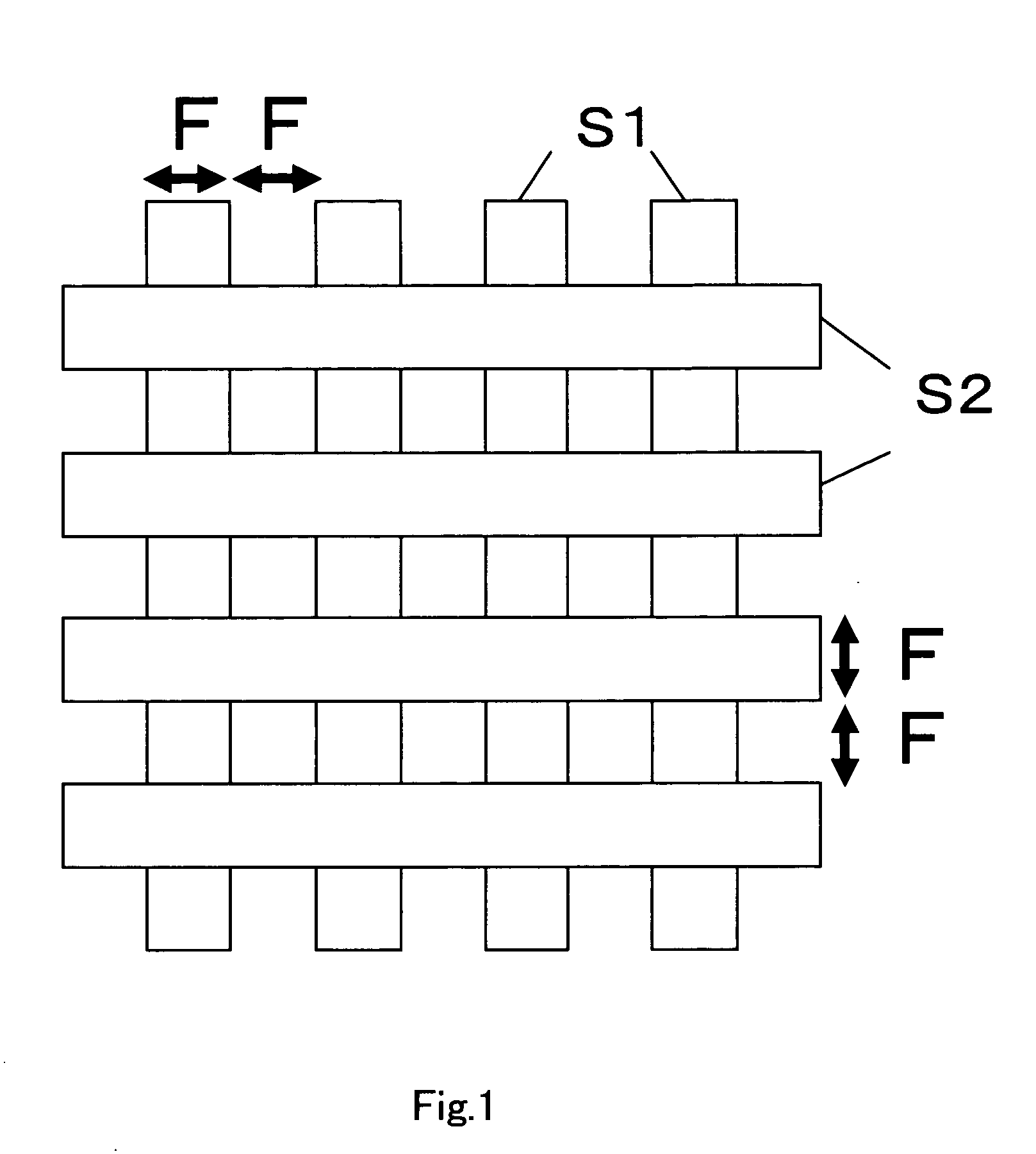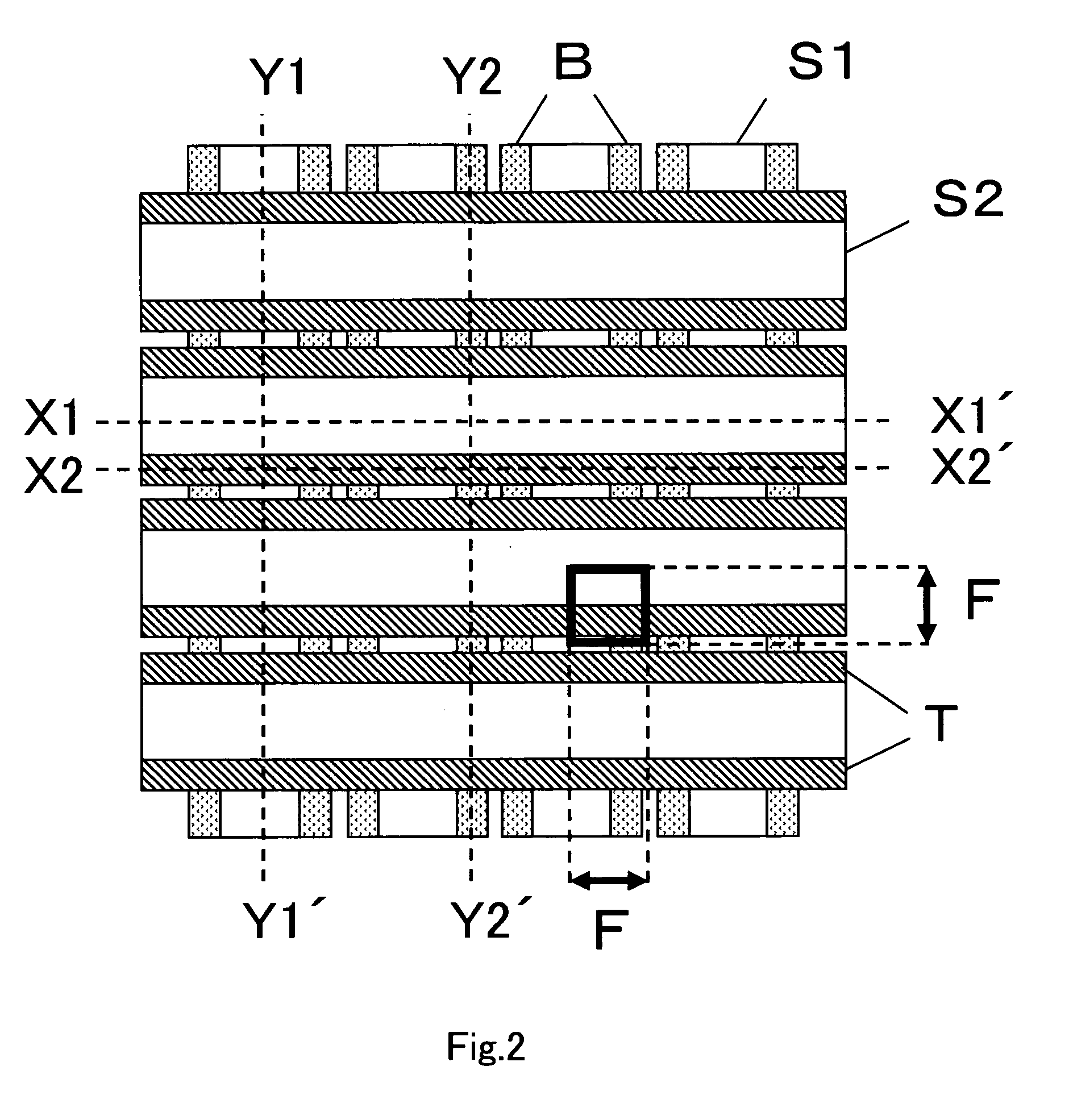Crosspoint structure semiconductor memory device, and manufacturing method thereof
a semiconductor memory and cross-section technology, applied in the direction of magnetic-field-controlled resistors, semiconductor devices, electrical devices, etc., can solve the problems of increasing power consumption, affecting the operation rate, and the memory cell area cannot be set smaller than 4fsup>2 /sup>in theory
- Summary
- Abstract
- Description
- Claims
- Application Information
AI Technical Summary
Benefits of technology
Problems solved by technology
Method used
Image
Examples
first embodiment
[0048] A first embodiment in which the method for manufacturing the semiconductor memory device according to the present invention (hereinafter, sometimes referred to as “the inventive method”) is applied to formation of upper electrode interconnectings and lower electrode interconnectings for crosspoint structure memory cells will be described.
[0049]FIG. 1 is a layout plan view for forming memory cells and a memory cell array by the inventive method. In FIG. 1, reference symbol S1 denotes a region that defines a first insulation film pattern necessary to form lower electrode interconnectings B (see FIG. 2). Reference symbol S2 denotes a region that defines a second insulation film pattern necessary to form upper electrode interconnectings T (see FIG. 2).
[0050]FIG. 2 is a plan view that schematically shows the memory cell array of the semiconductor memory device manufactured by the inventive method based on the layout plan view of FIG. 1. In the first embodiment, the upper electro...
second embodiment
[0061] A second embodiment in which the inventive method is applied to formation of upper electrode interconnectings for crosspoint structure memory cells will be described.
[0062]FIG. 10 is a layout plan view for forming memory cells and a memory cell array by the inventive method. In FIG. 10, reference symbol R1 denotes a region that defines a interconnecting pattern of the lower electrode interconnectings B, and reference symbol S2 denotes a region that defines the second insulation film pattern necessary to form the upper electrode interconnectings T (see FIG. 11).
[0063]FIG. 11 is a plan view that schematically shows the memory cell array of the semiconductor memory device manufactured by the inventive method based on the layout plan view of FIG. 10. In the second embodiment, the upper electrode interconnectings T are formed along both sidewall surfaces of the second insulation film pattern S2 in a self-aligned manner.
[0064]FIGS. 12A-12D to FIGS. 16A-16D show the method accord...
third embodiment
[0072] A third embodiment in which the inventive method is applied to formation of lower electrode interconnectings for crosspoint structure memory cells will be described.
[0073]FIG. 17 is a layout plan view for forming memory cells and a memory cell array by the inventive method. In FIG. 17, reference symbol S1 denotes a region that defines a first insulation pattern necessary to form the lower electrode interconnectings B (see FIG. 18), and reference symbol R2 denotes a region that defines a interconnecting pattern of the upper electrode interconnectings T.
[0074]FIG. 18 is a plan view that schematically shows the memory cell array of the semiconductor memory device manufactured by the inventive method based on the layout plan view of FIG. 17. In the third embodiment, the lower electrode interconnectings B are formed along both sidewall surfaces of the first insulation film pattern S1 in a self-aligned manner.
[0075]FIGS. 19A-19D to FIGS. 21A-21D show the method according to the ...
PUM
 Login to View More
Login to View More Abstract
Description
Claims
Application Information
 Login to View More
Login to View More - R&D
- Intellectual Property
- Life Sciences
- Materials
- Tech Scout
- Unparalleled Data Quality
- Higher Quality Content
- 60% Fewer Hallucinations
Browse by: Latest US Patents, China's latest patents, Technical Efficacy Thesaurus, Application Domain, Technology Topic, Popular Technical Reports.
© 2025 PatSnap. All rights reserved.Legal|Privacy policy|Modern Slavery Act Transparency Statement|Sitemap|About US| Contact US: help@patsnap.com



